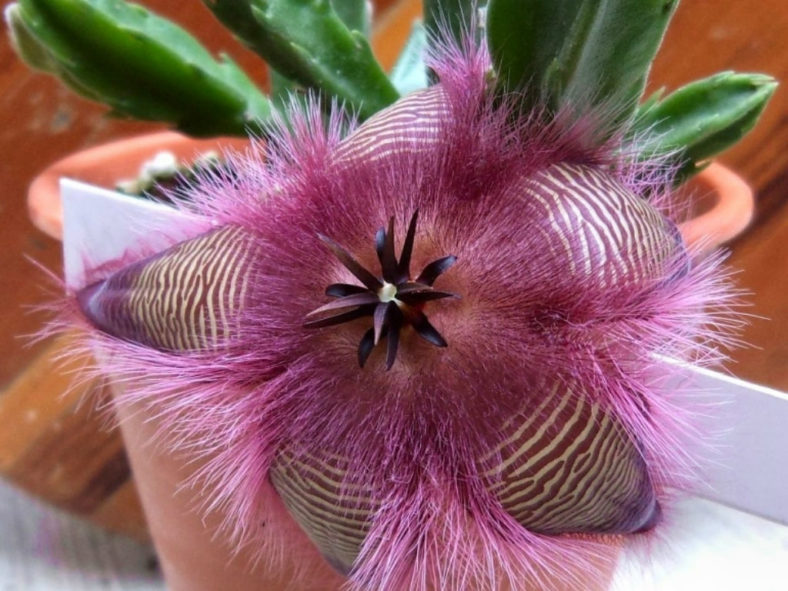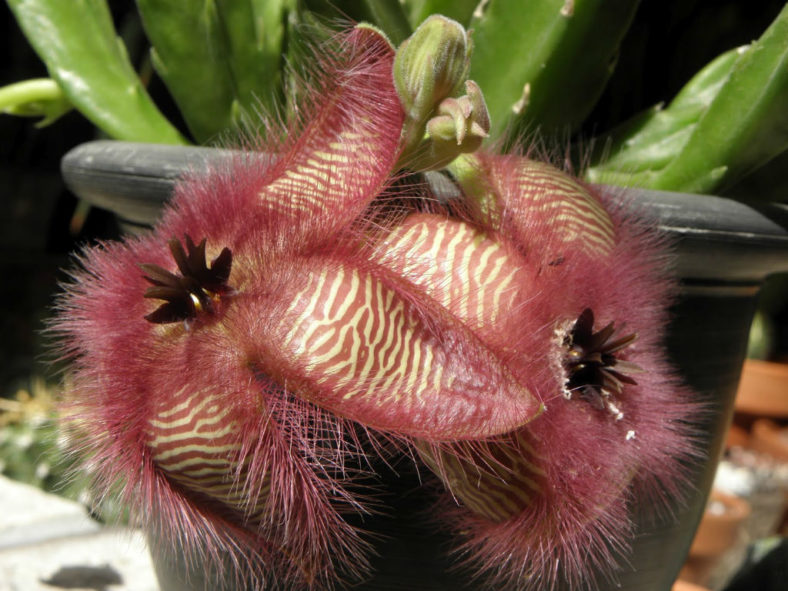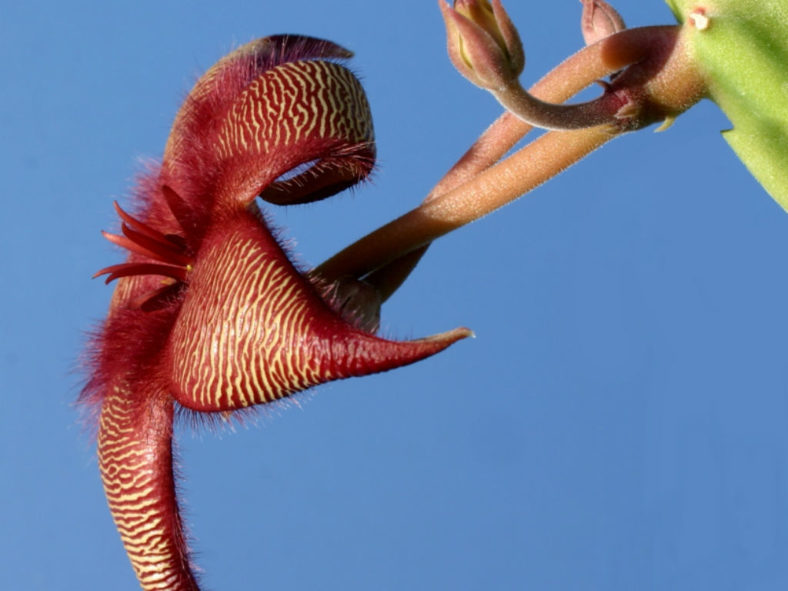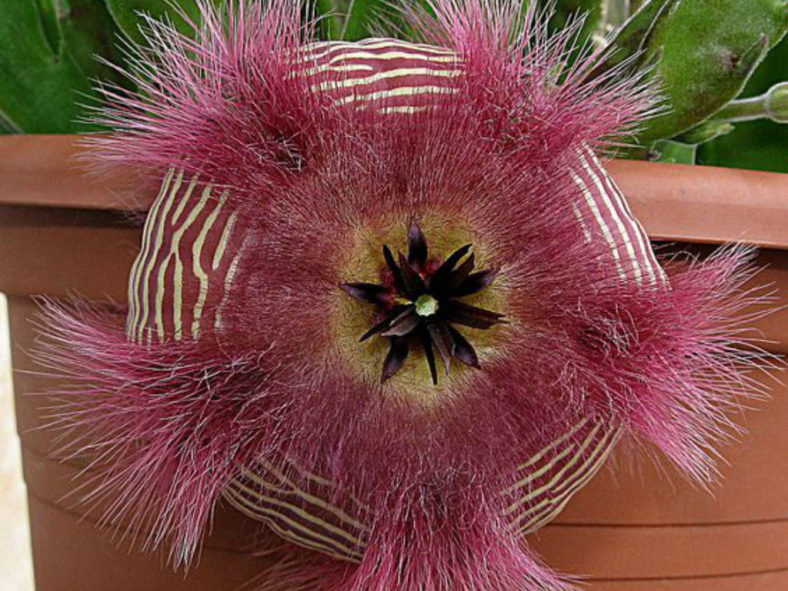Scientific Name
Stapelia hirsuta L.
Common Name(s)
African Starfish flowers, Carrion Plant, Starfish Flower, Hairy Stapelia
Synonym(s)
Ceropegia pulvinata, Gonostemon hirsutus, Stisseria hirsuta
Scientific Classification
Family: Apocynaceae
Subfamily: Asclepiadoideae
Tribe: Stapeliae
Genus: Stapelia
Etymology
The specific epithet "hirsuta" (pronounced "her-SOO-tuh") means "rough, shaggy, bristly, prickly; hairy, hirsute" and refers to the long hairs on the corolla of this species.
Origin
Stapelia hirsuta is native to South Africa and Namibia. It grows on stony, often sandstone slopes from Rosh Pinah in Namibia to Vredendal and Malmesbury in the Western Cape and Humansdorp in the Eastern Cape province of South Africa.
Description
Stapelia hirsuta is an attractive succulent that forms dense clumps of erect, greyish-green to green stems often suffused or mottled with red. The stems are subquadrangular and can grow up to 8 inches (20 cm) tall and 8 inches (2 cm) thick.
From late summer to late fall, Stapelia hirsuta produces large flowers on spreading stalks that can measure up to 2.8 inches (7 cm) long. The flowers can reach a diameter of 5.6 inches (14 cm). The corolla is purplish-cream on the outside, with 3 to 7 darker longitudinal veins. Inside, the corolla is purple-red with yellow bands and usually softly hairy around the corona and along the margins of the lobes. The corona is purple-red and raised on a short, obtusely pentagonal stipe.
Stapelia hirsuta is a highly variable species that includes numerous varieties and hybrids.

Varieties of Stapelia hirsuta
- Stapelia hirsuta var. gariepensis
- Stapelia hirsuta var. hirsuta
- Stapelia hirsuta var. praetermissa
- Stapelia hirsuta var. tsomoensis
- Stapelia hirsuta var. vetula
How to Grow and Care for Stapelia hirsuta
Hardiness: USDA hardiness zones 10b to 11b: from 35°F (1.7°C) to 50°F (10°C).
Several species are fairly easy to grow. Others, often those with slightly hairy stems and the more unusual flowers, are more challenging and require careful watering (with some fertilizer) during the growing season and complete water withdrawal during the winter months. A minimum winter temperature of 10°C (50°F) is acceptable, providing plants are kept dry. A heated, growing bench or incubator can help delicate plants survive the colder months. However, many species live under shrubs in their habitat and prefer light shade rather than full sun.
A gritty succulent soil mix is essential, and clay pots are advisable for the more delicate species. Some growers prefer mineral-only soil to reduce the risk of fungal root attack. A layer of grit on the soil's surface prevents moisture from accumulating around the base of the stems.
Keeping Stapelias and their roots free of pests, such as mealybugs, is key to success, as fungal attacks often result from insect-damaged stems.
Learn more in "How to Grow and Care for Stapelia."
Links
- Back to genus Stapelia
- Succupedia: Browse succulents by Scientific Name, Common Name, Genus, Family, USDA Hardiness Zone, Origin, or cacti by Genus
Photo Gallery
Click on a photo to see a larger version.


